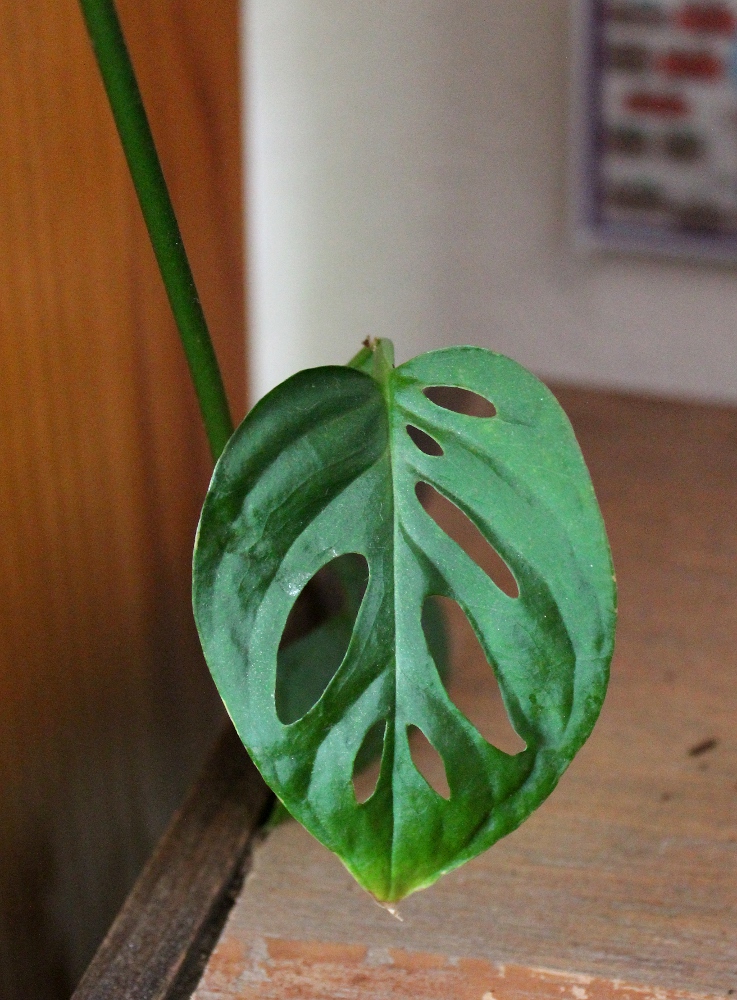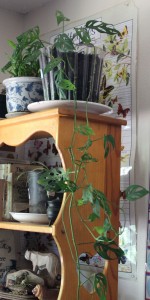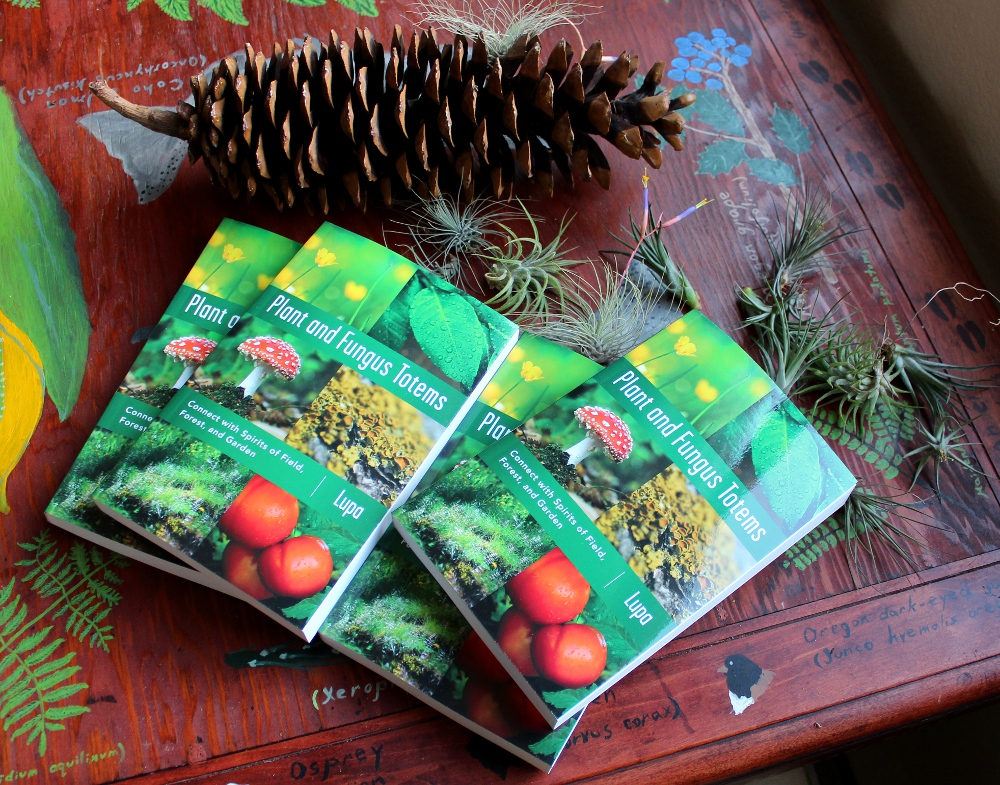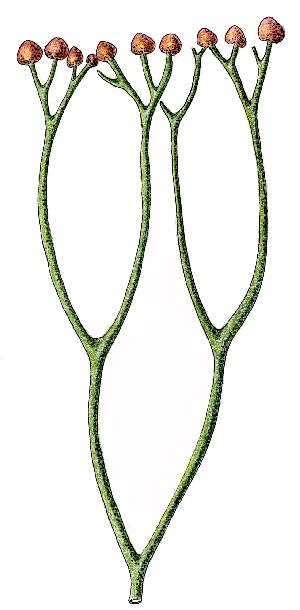Last summer, when I was working a day job in addition to keeping the Green Wolf as a business going (yes, it was a busy time) I was fortunate enough to be able to walk to work every day. Along my walk there was an office building where someone had some house plants they decided they no longer wanted to care for. So within my first week of work, I had adopted several new plants from the curb. All of them were dehydrated and in too-small containers, and most of them I wasn’t even sure what they were.
One in particular stood out to me. It looked something like a philodendron, but with odd natural holes in the leaves. With a little research, I discovered I had a specimen of Monstera obliqua, the Swiss cheese vine. It’s the little cousin of the better-known Swiss cheese plant, Monstera deliciosa; its proper Latin name is actually Monstera adansonii, but both I and the totem rather prefer Monstera obliqua between the two of us. The plant does grow like a philodendron, and like its lookalike it can be propagated with cuttings.
There weren’t going to be any cuttings off this sad little vine, though, at least not for a while. She had one single vine, barely six inches long, with just a few shriveled leaves on it, and was still potted in its original nursery planter, a tiny plastic box-like thing about three inches cubed, with bone-dry soil. I gave the poor thing some water as soon as I got to the office, and then carried her home with me that evening for repotting. After that, it was a waiting game to see if she and her companions would pull through.
I am pleased to say that not only did they make it, but they flourished! The Monstera has been the most successful; a year later, that one little vine is now the better part of ten feet long, and there are others of varying lengths. (I think of her as my tropical Rapunzel, albeit an inedible one!) I recently repotted her again, and had the chance to have a long conversation with her totem, Monstera Obliqua.
First, the totem thanked me for caring for its offspring and rescuing it that day. Then it asked me about my experience caring for the plant for the past year. I talked about how fulfilling and exciting it was to see her thrive and grow, rebounding from poor care. I had enjoyed learning more about how to take care of her and my other house plants, especially since my experience had mostly been with temperate vegetables, not tropical vines! And I appreciated the beauty of this unusual plant, brightening first my office, and then my home when my temporary summer job ended.
Then Monstera Obliqua said “In the wild, my offspring must climb the taller trees in order to get enough sunlight to live. They have to climb off the forest floor to keep from being trampled and destroyed. There is nothing wrong with relying on those around you for help. My children do not harm the trees they climb; there is no competition, only opportunity. The tree can get what it needs regardless; the vine simply benefits from its strength.
“In the same way, this little vine has relied on your strength. She is not in her home tropics, but in a place of more varied temperatures, at the mercy of whoever brings her water and food and soil. You have offered her somewhere to grow and be, and attended to her needs. The only thing she might hope for is a little more space to stretch her vines along, letting her instinct to climb be realized. But you see how she flourishes; she appreciates you and makes the most of what you give her.
“Can you say the same of those who give to you?”
And that gave me reason to pause. For many years now I’ve ended my day with a thank you prayer for all those who have given of themselves to keep me alive and well in this world, and I try my best to show my gratitude to those who help me each and every day. Sometimes I have to struggle a bit; even the toughest experiences are still lessons to be learned and stories to be made, and I do my best to live with no regrets, only perspective. But every moment I breathe is a gift, and I thought of all the times when I was the vine climbing a tree, and all the times I was a tree with vines climbing me for support. It wasn’t competition, just everyone doing what they needed to to survive.
And now I look at my not-so-little Monstera vine with a little more meaning and a little more understanding of the complex ecosystems and webs I am a part of. There’s no shame in needing others, and there’s no arrogance in being strong. Not every vine has to be a strangler fig, killing its host over time, and not every person who draws on one’s resources is going to take too much. A healthy balance is a good thing to aspire to, and the totem Monstera Obliqua reminded me of that.
If you liked this post, please consider purchasing a copy of my newest book, Plant and Fungus Totems: Connecting With Spirits of Field, Forest and Garden. Your support is greatly appreciated!




